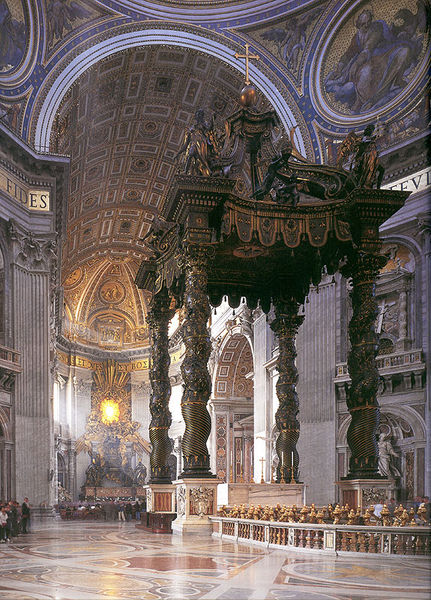St. Peter's Baldachin
7:00 AM |
| Gian Lorenzo Bernini, St. Peter's Baldachin, 1623-34 |
 |
| Detail of St. Peter's Baldachin: columns and canopy |
 |
| Detail of St. Peter's Baldachin: coat of arms |
And yet, despite all of my griping about the politics surrounding the piece, I cannot bring myself to dismiss it. How could I? Its soaring columns, dramatic statuary, and massive scale command the eye in a building already filled to the brim with beautiful decorum. And whatever kissing up Bernini may have done pales in comparison to the masterful planning and execution that went into the coats of arms. Each represents a stage in childbirth - from conception through delivery - in a tasteful, yet daring show of talent. Sure, the methods may have been questionable, but what the Barberini built, barbaric or not, no one else could have.
0 comments